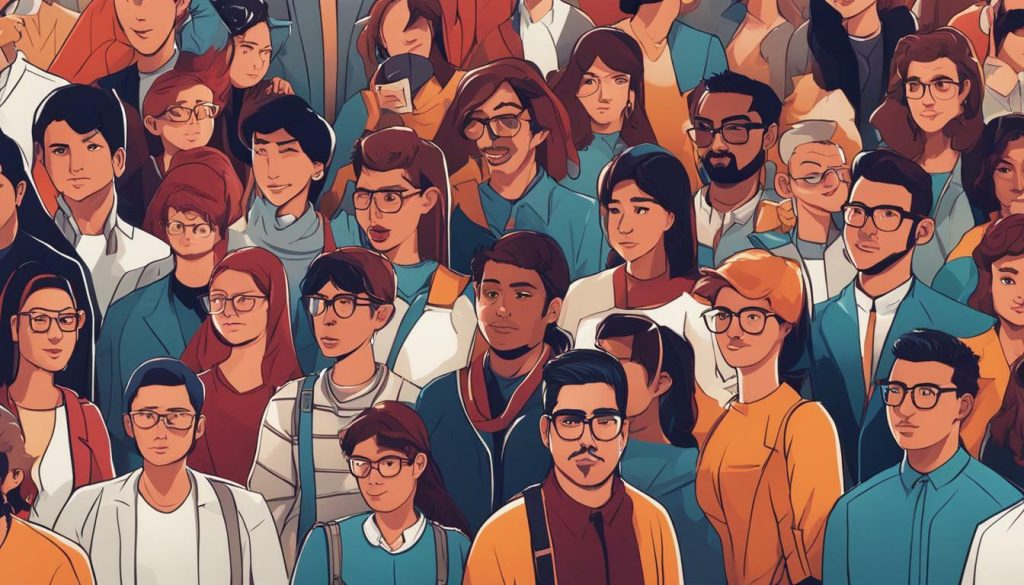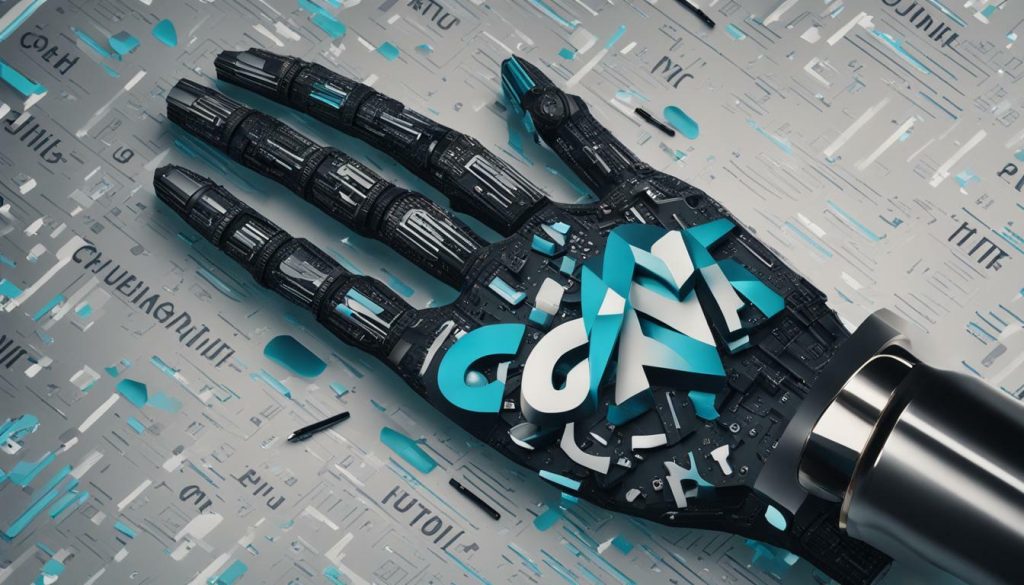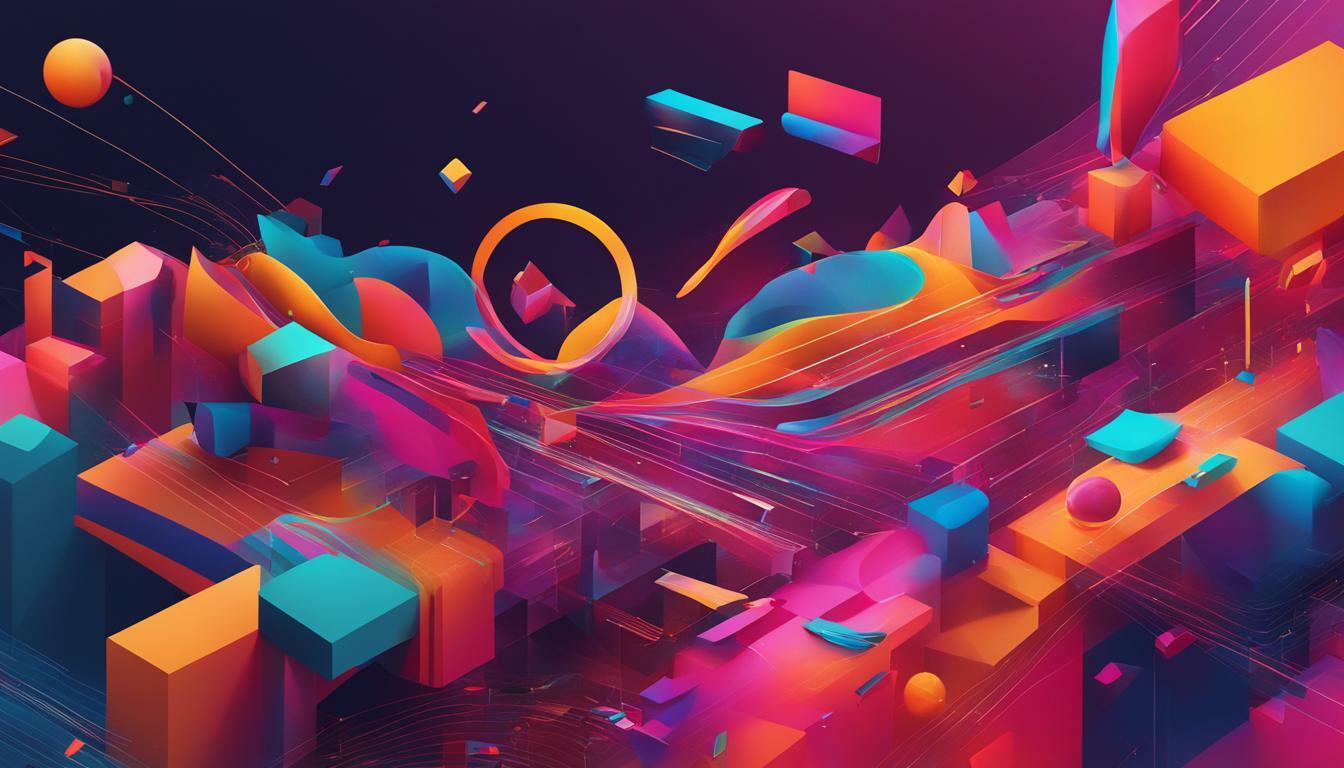With the rise of AI language models like ChatGPT, it is crucial to understand the extent to which it has been utilized in generating the content on this website. AI-generated content has become increasingly prevalent across various domains, including emails, cover letters, marketing pitches, college essays, coding, and news articles.
Detecting AI-generated content and distinguishing it from human-written content poses a challenge for both educators and AI detection tools. To address this, several AI detectors, such as AI Text Classifier, GPTZero, Originality.AI, Writer AI Content Detector, and ZeroGPT, have been developed to identify AI-generated text. These tools analyze factors such as language complexity, sentence structure, and pattern recognition to determine the likelihood of AI-generated content.
However, the accuracy of these detectors is not always guaranteed, and false accusations can occur. Therefore, it is important to exercise caution and use these tools as a means to foster conversation and awareness regarding AI-generated content rather than relying solely on their results.
- AI language models like ChatGPT have been widely used in generating content across various domains.
- Detecting AI-generated content can be challenging for both educators and AI detection tools.
- AI detectors analyze factors such as language complexity and sentence structure to identify AI-generated text.
- Caution should be exercised when relying solely on AI detection results, as false accusations can occur.
- Using AI detection tools can foster conversation and awareness about AI-generated content.
AI-Generated Content and Its Impact
The use of ChatGPT, an advanced AI language model developed by OpenAI, has revolutionized content creation in fields ranging from emails and marketing pitches to news articles and college essays. Powered by natural language processing and advanced text generation algorithms, ChatGPT generates language that closely resembles human-written content, making it difficult to distinguish between the two.
As businesses and individuals increasingly rely on AI-generated content, the challenge of detecting and differentiating it from human-written text becomes more prominent. Educators and AI detection tools face the task of developing strategies to identify AI-generated content to ensure its appropriate use.
Several AI detectors have been developed to address this challenge. Tools such as AI Text Classifier, GPTZero, Originality.AI, Writer AI Content Detector, and ZeroGPT use complex algorithms to analyze language complexity, sentence structure, and pattern recognition to determine the likelihood of AI-generated content. While these detectors have shown promise, their accuracy is not always guaranteed, and false accusations can occur. Thus, it is essential to exercise caution and not solely rely on the results of these tools.

Instead of solely relying on AI detection tools, it is crucial to use them as a means to foster conversation and awareness surrounding AI-generated content. By engaging in dialogue about the influence and implications of AI-generated text, we can better understand its impact and develop strategies for its responsible use.
Therefore, it is important for educators to play a vital role in addressing AI-generated content. By educating students about the capabilities and limitations of AI language models, teachers can equip them with the knowledge to distinguish between AI-generated and human-written content. This includes teaching critical thinking skills, contextual analysis, and promoting a collaborative approach to content creation where AI language models are used as valuable tools rather than the sole source of content.
The Importance of Context and Collaboration
When analyzing AI-generated content, considering the context becomes crucial. AI language models, like ChatGPT, lack real-world experiences, emotions, and ethical considerations that humans possess. Therefore, understanding the nuances and implications of the content within its specific context is essential.
To maintain a balance between AI-generated and human-written content, collaboration between humans and AI language models becomes necessary. By combining the unique strengths of both approaches, we can create more accurate, informative, and engaging content while ensuring its authenticity and ethical standards.
| Pros of AI-Generated Content | Pros of Human-Written Content |
|---|---|
| Efficiency and speed in content creation | Emotional intelligence and creativity |
| Large-scale data analysis and pattern recognition | Real-world experiences and ethical considerations |
| Consistency and accuracy in information delivery | Contextual understanding and nuanced storytelling |
In conclusion, ChatGPT and other AI language models have transformed content creation across various domains. While detecting AI-generated content remains a challenge, it is essential to foster conversation, exercise caution, and use AI detection tools as aids rather than absolute authorities. Educators have a critical role to play in helping students navigate the ethical and practical implications of AI-generated content. By embracing collaboration and considering context, we can find the right balance between AI-generated and human-written content, ensuring the highest quality and authenticity.
Detecting AI-Generated Content
Several AI detection tools, including AI Text Classifier, GPTZero, Originality.AI, Writer AI Content Detector, and ZeroGPT, have been designed to detect AI-generated text by analyzing factors such as language complexity, sentence structure, and pattern recognition. These tools aim to identify the likelihood of AI-generated content through various computational techniques.
Language complexity is one of the key factors analyzed by AI detection tools. AI-generated text often exhibits a higher level of language complexity, incorporating sophisticated vocabulary and sentence structures. By assessing the complexity of the language used, these tools can differentiate between AI-generated and human-written content.
Sentence structure is another important aspect considered by AI detection tools. AI language models like ChatGPT tend to rely on specific patterns and repetitions in their text generation. Detecting these patterns helps in distinguishing AI-generated content from human-written content that is more likely to exhibit unique sentence structures.
Pattern recognition plays a vital role in identifying AI-generated text. AI detection tools analyze patterns in the data, such as recurring phrases or word choices, to determine the likelihood of content being generated by AI language models. By recognizing these patterns, the tools can provide insights into the origins of the content.
Example of an AI Detector’s Analysis:
AI Text Classifier analyzed the text and determined that it has a high probability of being AI-generated due to the complex language, repetitive sentence structures, and recurring patterns found in the data. However, it is important to note that AI detection tools are not infallible, and there is a possibility of false positive or false negative results.
In conclusion, AI detection tools have made significant strides in detecting AI-generated content by analyzing factors such as language complexity, sentence structure, and pattern recognition. While these tools provide valuable insights, it is essential to exercise caution and not solely rely on their results. The collaboration between humans and AI detection tools can help foster conversation and raise awareness about the prevalence and impact of AI-generated content in various domains.

| AI Detection Tool | Factors Analyzed |
|---|---|
| AI Text Classifier | Language complexity, sentence structure, pattern recognition |
| GPTZero | Grammar consistency, topic coherence, stylistic patterns |
| Originality.AI | Plagiarism detection, language analytics, stylistic inconsistencies |
| Writer AI Content Detector | Word choice analysis, sentence similarity, semantic coherence |
| ZeroGPT | Language fluency, topical knowledge, logical coherence |
Accuracy and Limitations of AI Detectors
While AI detection tools are valuable resources, it is essential to acknowledge their limitations, as false accusations can occur, and their accuracy is not always guaranteed. These tools, such as AI Text Classifier, GPTZero, Originality.AI, Writer AI Content Detector, and ZeroGPT, have been developed to identify AI-generated text by analyzing factors such as language complexity, sentence structure, and pattern recognition. However, their effectiveness depends on the sophistication of the AI models they are built upon and the specific algorithms used.
Given the rapid advancements in AI technology, AI detectors are constantly evolving to improve their accuracy. But, as with any automated system, they still face challenges in accurately distinguishing AI-generated content from human-written text. The complexity arises from the ability of AI language models, like ChatGPT, to mimic human writing styles and generate text that appears genuine. This similarity in writing can lead to false accusations, where AI-generated content is mistaken for human-written content, or vice versa.
Moreover, AI detectors may struggle to detect subtle nuances that differentiate AI-generated text from human-written text. Factors like context, tone, and rhetorical devices that humans can instinctively recognize might pose challenges for current AI detection models. As a result, there is a need for continuous refinement and improvement of AI detection tools to keep up with the evolving capabilities of AI language models like ChatGPT.
It is important to approach the results of AI detection tools with caution and not solely rely on their outputs. While these tools can provide valuable insights and assist in identifying potential AI-generated content, a human review and contextual analysis are still necessary to ensure accurate assessments. Collaboration between humans and AI language models can help to strike the right balance in content evaluation, leveraging the strengths of both approaches to make informed judgments.
Overall, understanding the limitations of AI detectors is crucial in navigating the landscape of AI-generated content. By exercising caution, fostering conversation, and promoting awareness, we can effectively utilize AI detection tools as valuable resources while acknowledging the ongoing challenges in accurately detecting AI-generated text.
Table: Comparison of AI Detection Tools
| AI Detection Tool | Strengths | Limitations |
|---|---|---|
| AI Text Classifier | – Robust pattern recognition – Efficient language complexity analysis | – Limited scope in detecting nuanced writing styles – Susceptible to false positives |
| GPTZero | – Advanced sentence structure analysis – Effective in identifying template-based AI-generated content | – Less accurate in detecting content generated by newer AI models – May struggle with context-dependent text |
| Originality.AI | – Comprehensive plagiarism detection – Considers semantic coherence in content analysis | – Challenges in identifying subtle AI-generated text variations – Limited effectiveness in detecting content with mixed AI-human collaboration |
| Writer AI Content Detector | – Real-time content analysis – Customizable rules for detection | – Reliance on rule-based methods may lead to false negatives – Difficulty in distinguishing AI-generated content from expert-written text |
| ZeroGPT | – Accurate recognition of AI language model-generated text – Continual updates to address evolving AI models | – Lower performance when detecting content generated by lesser-known AI models – Challenges in assessing context-dependent text nuances |

Exercising Caution and Fostering Awareness
To navigate the presence of AI-generated content, it is crucial to exercise caution and utilize AI detection tools as a catalyst for conversations that promote awareness. As AI language models like ChatGPT become increasingly integrated into content creation, it becomes more challenging to distinguish between AI-generated and human-written text. This blurring of lines raises concerns about the potential impact on credibility and authenticity across various domains.
Several AI detection tools, such as AI Text Classifier, GPTZero, Originality.AI, Writer AI Content Detector, and ZeroGPT, have been developed to identify AI-generated content. These tools analyze factors such as language complexity, sentence structure, and pattern recognition to determine the likelihood of AI involvement. However, it is important to note that the accuracy of these detectors is not always guaranteed, and false accusations can occur.
“As AI language models continue to evolve, so does the need for improved detection techniques. It is a delicate balance between identifying AI-generated content and avoiding erroneous judgments,” warns Dr. Emily Miller, an expert in AI language models.
Hence, it is crucial to approach AI detection tools with caution and not solely rely on their results. Instead, they should serve as a starting point for fostering conversation and awareness about the prevalence and impact of AI-generated content. By engaging in discussions on the role of AI in content creation, users can develop a better understanding of its implications and the measures required to ensure ethical practices.

Ultimately, the goal is to strike a balance between utilizing AI-generated content for efficiency and harnessing human creativity and expertise to maintain authenticity. By being aware of the presence and influence of AI in content creation, users can make informed decisions and contribute to the ongoing conversation surrounding this emerging technology.
| AI Detection Tools | Analysis Factors |
|---|---|
| AI Text Classifier | Language complexity, sentence structure |
| GPTZero | Pattern recognition, linguistic nuances |
| Originality.AI | Unique patterns, originality metrics |
| Writer AI Content Detector | Writing style, contextual understanding |
| ZeroGPT | Coherence, logical flow |
The Role of Educators in Addressing AI-Generated Content
As AI-generated content becomes more prevalent, educators play a crucial role in educating students about its presence and teaching them how to identify and evaluate such content. With the widespread use of AI language models like ChatGPT, it is essential for students to understand the impact of AI-generated text and develop the skills to discern between AI-generated and human-written content.
Educators can address AI-generated content by incorporating lessons on digital literacy and critical thinking into their curriculum. By teaching students how to evaluate the credibility and reliability of information, educators empower them to navigate the increasingly complex digital landscape. This includes discussing the characteristics of AI-generated content, such as language patterns, consistency, and potential biases.
Furthermore, educators can introduce students to AI detection tools and guide them in using these tools responsibly. It is important to emphasize that AI detectors are not foolproof and can produce false accusations. Therefore, educators should foster a dialogue about the limitations and ethics surrounding AI-generated content detection. By encouraging open discussions and collaboration, educators can help students develop a nuanced understanding of AI-generated content.

| AI Detection Tool | Features Analyzed |
|---|---|
| AI Text Classifier | Language complexity, sentence structure |
| GPTZero | Pattern recognition |
| Originality.AI | Consistency, plagiarism detection |
| Writer AI Content Detector | Writing style, coherence |
| ZeroGPT | Grammar, syntax |
By educating students about AI-generated content and equipping them with the skills to critically analyze it, educators can prepare the next generation to effectively navigate the digital landscape and make informed decisions about the information they encounter.
The Importance of Context and Collaboration
Understanding the context in which AI-generated content is used is vital, as it allows for a more nuanced evaluation of its relevance and accuracy, while collaboration with AI language models can enhance content creation processes. When analyzing AI-generated content, considering the specific context in which it is presented becomes crucial. The intended audience, purpose, and domain of the content all play significant roles in determining its appropriateness and effectiveness. AI language models, like ChatGPT, have the potential to contribute valuable insights and generate high-quality content when harnessed in collaboration with human writers.
Collaboration between humans and AI language models can lead to more efficient content creation processes. By leveraging the capabilities of AI, writers can benefit from quick assistance in generating ideas, improving grammar and spelling, and enhancing overall readability. The AI-generated suggestions can act as prompts, helping writers refine their creativity and productivity. This collaborative approach allows for human expertise and judgement to guide the final output, ensuring a harmonious blend of human creativity and AI-powered support.
AI language models bring immense value when used in conjunction with human writers. Together, they can elevate content creation to new heights, combining the efficiency and accuracy of AI technology with the human touch of emotion, creativity, and critical thinking.
However, it is important to note that collaboration with AI language models should never replace the role of human writers. The ability to think critically, empathize with the audience, and inject personal experiences and insights into the content remains the unique domain of human writers. The resulting collaboration between humans and AI language models fosters an environment where each can leverage their strengths, producing content that is both informative and engaging.
Benefits of Contextual Collaboration
Collaborating with AI language models within a specific context offers numerous benefits. The AI models can peruse vast amounts of data, analyze patterns, and provide relevant and up-to-date information. Moreover, they can assist in language translation, terminology glossaries, and generating alternative wording options to suit different target audiences. By embracing the potential of contextual collaboration, content creators can tap into the power of AI while maintaining control over the final output.
Ultimately, the synergy between humans and AI language models is essential for creating high-quality content that resonates with readers. Striking the right balance between the context and collaborative efforts allows for the optimal utilization of AI-generated content while preserving the authenticity and creativity of human-written text. When harnessed effectively, AI language models can revolutionize content creation, enabling us to communicate more efficiently and engagingly in the digital era.

ChatGPT, an AI-powered language model, has played a significant role in generating the content on this website, offering a seamless and efficient content creation process. Its advanced natural language processing capabilities enable it to produce high-quality text that closely resembles human-written content. By leveraging ChatGPT’s AI-powered algorithms, this website has been able to consistently deliver engaging and informative articles to its users.
One of the key advantages of utilizing ChatGPT for content creation is its ability to generate text in a wide range of topics and styles. Whether it’s a technical guide, a product description, or a thought-provoking blog post, ChatGPT can adapt to different needs and produce content that aligns with the website’s objectives. This flexibility has allowed the website to cater to diverse audiences and provide valuable information across various domains.
To illustrate ChatGPT’s versatility, let’s take a closer look at a specific example: an educational website that offers math tutorials. By harnessing the power of ChatGPT, the website can automatically generate step-by-step explanations for complex math problems, providing students with concise and comprehensive solutions. This AI-powered content creation not only saves time and resources but also ensures that the website offers accurate and detailed explanations, enhancing the learning experience for students.
Example of AI-generated content on an educational website:
“In calculus, the derivative is a fundamental concept used to analyze and understand the rate of change of a function. Let’s consider an example where we want to find the derivative of f(x) = 3x^2. To do this, we can apply the power rule, which states that the derivative of x^n is n*x^(n-1). Applying the power rule to our function, we get f'(x) = 2*3x^(2-1) = 6x. Therefore, the derivative of f(x) = 3x^2 is f'(x) = 6x.”
While AI-generated content like the example above can greatly enhance the website’s offerings, it’s important to maintain a balance between AI-generated and human-written content. Human expertise and creativity play a crucial role in providing unique perspectives and personal experiences that AI algorithms may not be able to replicate. Finding the right blend of AI-generated and human-written content ensures that the website delivers a comprehensive and authentic user experience.
| Pros of AI-generated content | Cons of AI-generated content |
|---|---|
| – Efficient content creation process | – Lack of personal touch and creativity |
| – Consistent quality and accuracy | – Potential for robotic or unnatural tone |
| – Versatility in producing content on various topics | – Difficulty in capturing nuanced emotions or experiences |
By striking the right balance and leveraging the strengths of both AI-generated and human-written content, this website can continue to provide its users with valuable and engaging information while harnessing the power of AI to streamline content creation.

While ChatGPT has undoubtedly revolutionized the way content is generated, it is important to recognize that AI detection tools, such as AI Text Classifier and GPTZero, are continuously evolving to identify AI-generated text. These tools analyze language complexity, sentence structure, and pattern recognition to determine the likelihood of AI-generated content. However, their accuracy is not always guaranteed, and false accusations can occur. Therefore, it is crucial for the website owners, educators, and users to exercise caution and foster conversations that promote awareness about AI-generated content rather than solely relying on the results of AI detection tools.
Evaluating the Balance Between AI-Generated and Human-Written Content
Striking the right balance between AI-generated and human-written content is crucial, as it allows for a harmonious integration of their respective strengths to deliver valuable and engaging content. AI language models like ChatGPT have undoubtedly revolutionized content creation, offering efficiency and speed in generating vast amounts of text. However, the role of human writers cannot be understated, as they bring creativity, critical thinking, and a deep understanding of context to the table.
When evaluating the balance between AI-generated and human-written content, it is essential to consider the specific requirements of the content and the intended audience. AI language models excel at producing large volumes of standardized content, such as product descriptions or news briefs. On the other hand, human writers excel at injecting personality, emotion, and authentic storytelling into their work, making it more relatable and resonant with readers.
One effective approach to finding the right balance is to leverage the strengths of both AI and human writers in a collaborative manner. For instance, AI language models can provide a solid foundation by generating a rough draft or suggesting topic ideas, while human writers can then refine and enhance the content, adding creativity, nuance, and cultural relevance. This collaboration ensures that the content benefits from the efficiency of AI and the human touch that fosters authenticity and connection.
As technology continues to advance, the boundaries between AI-generated and human-written content may become increasingly blurred. It is important for content creators to be transparent about the involvement of AI in the content creation process. This transparency helps maintain trust and allows readers to understand the provenance of the content they consume. Furthermore, fostering ongoing conversations and awareness about the use of AI in content creation can help educate and empower individuals to critically evaluate the information they encounter.
Benefits of Balancing AI and Human Contributions
By striking the right balance between AI-generated and human-written content, organizations can optimize their content creation processes and deliver high-quality, engaging, and relevant content to their audiences. Some key benefits of this balance include:
- Efficiency and speed: AI-generated content can help streamline workflow and handle repetitive or mundane tasks, freeing up time for human writers to focus on more complex and creative aspects.
- Consistency and scalability: AI language models can ensure consistency in tone, style, and branding across a large volume of content, facilitating scalability without sacrificing quality.
- Authenticity and emotional connection: Human writers have the ability to infuse content with genuine emotion, storytelling, and cultural nuances, making it more relatable and resonant with readers.
- Customization and adaptation: Human writers can adapt content to specific target audiences, adjusting tone, language, and cultural references to ensure maximum impact and engagement.
In conclusion, the balance between AI-generated and human-written content is a crucial consideration for content creators. By leveraging the strengths of both approaches and fostering transparency and awareness, organizations can deliver content that combines efficiency, scalability, and authenticity, ultimately providing valuable and engaging experiences for their audiences.
| AI-Generated Content | Human-Written Content |
|---|---|
| Efficient and fast | Creative and nuanced |
| Standardized and scalable | Authentic and relatable |
| Risks of lack of context | Ability to understand context |
| Consistent tone and style | Emotional and storytelling elements |
Conclusion
In conclusion, ChatGPT has significantly influenced the content on this website, showcasing the capabilities of AI-powered content creation while highlighting the importance of context and collaboration with human expertise.
With the growing prevalence of AI language models like ChatGPT, the boundaries between AI-generated and human-written content have become increasingly blurred. This poses a challenge for educators and AI detection tools in detecting and distinguishing between the two.
Various AI detectors, such as the AI Text Classifier, GPTZero, Originality.AI, Writer AI Content Detector, and ZeroGPT, have been developed to identify AI-generated text. These tools analyze factors such as language complexity, sentence structure, and pattern recognition to determine the likelihood of AI-generated content. However, their accuracy is not always guaranteed, and false accusations can occur.
Therefore, it is important to exercise caution when relying solely on AI detection tools. Instead, these tools should be used as a means to foster conversation and awareness regarding AI-generated content. By considering the limitations of AI detectors and engaging in collaborative efforts with AI language models like ChatGPT, we can better evaluate the balance between AI-generated and human-written content to provide users with a seamless and authentic online experience.
FAQ
How can I determine how much content on this website is written by ChatGPT?
You can analyze the language complexity, sentence structure, and patterns in the content to discern AI-generated text from human-written text.
What are some AI detection tools that can identify AI-generated content?
AI Text Classifier, GPTZero, Originality.AI, Writer AI Content Detector, and ZeroGPT are tools developed to detect AI-generated text.
Are AI detection tools always accurate in detecting AI-generated content?
The accuracy of these detectors is not always guaranteed, and false accusations can occur. It is important to exercise caution and consider the results as a starting point for conversation and awareness.
How can educators address AI-generated content in their teaching?
Educators play a crucial role in helping students understand the impact of AI-generated content and teaching them how to distinguish it from human-written text.
Why is it important to consider context in AI-generated content?
Context is crucial for accurately analyzing and interpreting AI-generated content. It helps in understanding the intent and potential biases present in the text.
How has ChatGPT influenced the content on this website?
ChatGPT has contributed to the creation of website content, adding an AI-powered element to the overall user experience.
How can we achieve a balance between AI-generated and human-written content?
Finding the right balance involves leveraging the strengths of both AI-generated and human-written content to create a comprehensive and engaging user experience.

